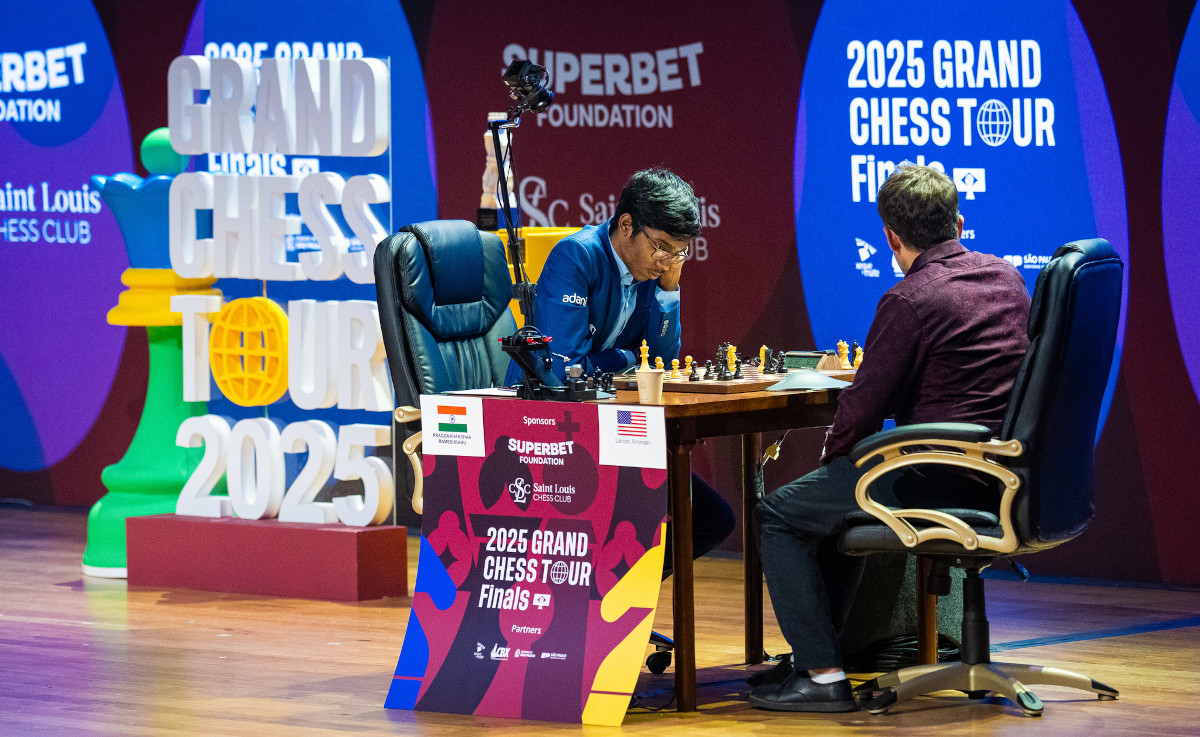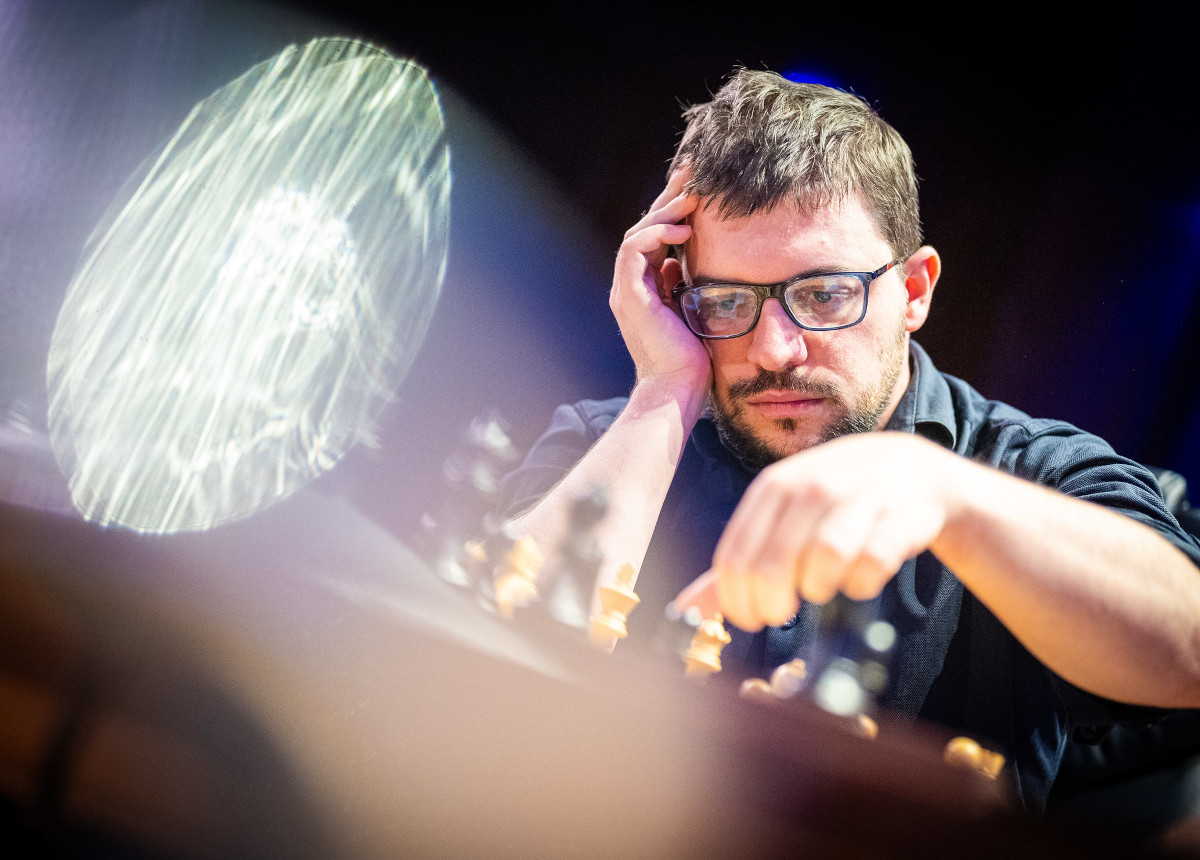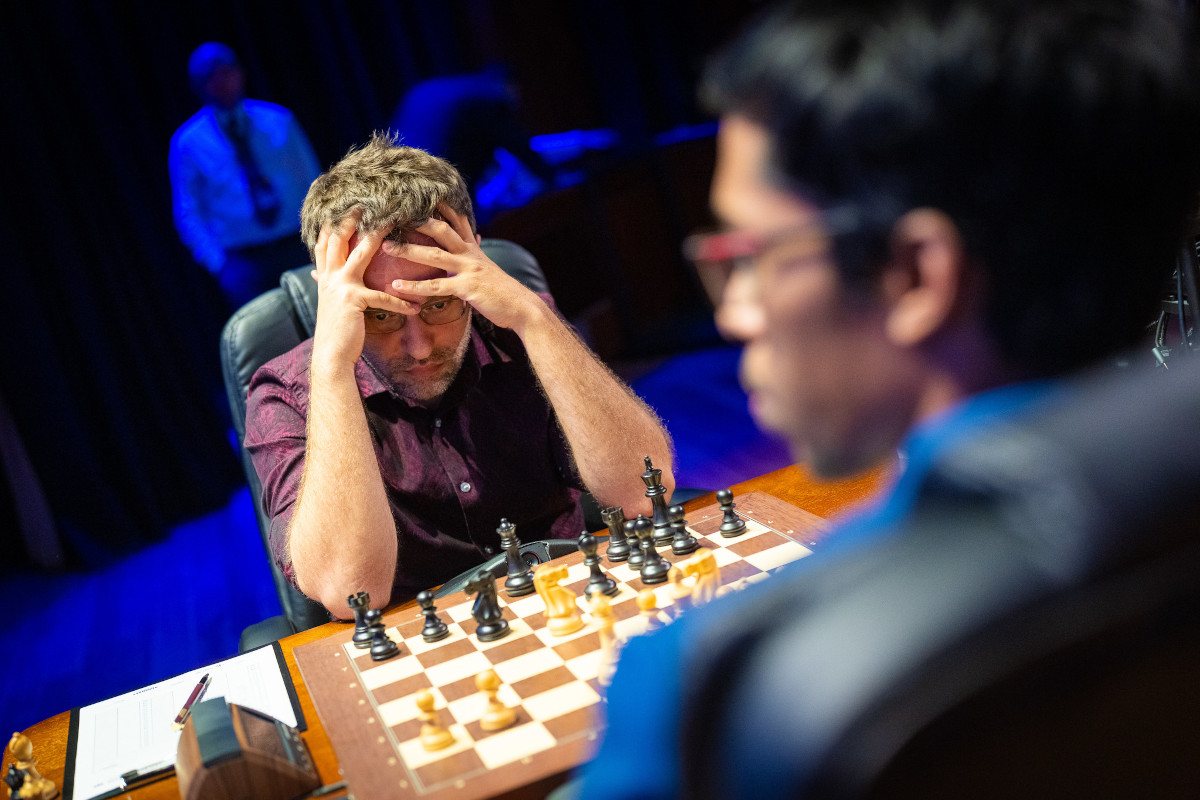A very slight edge for White
The second day of classical play at the championship match and the third-place playoff of the Grand Chess Tour Finals in São Paulo again concluded without decisive results, leaving both contests balanced ahead of the rapid and blitz section.
While neither game carried much drama, there was still a measure of tension as both Maxime Vachier-Lagrave and Praggnanandhaa Rameshbabu tried, in different ways, to press in endgames that ultimately could not be converted.

Pragg and Aronian battle it out at the great-looking hall of the World Trade Center in São Paulo | Photo: Lennart Ootes
In the final itself, Vachier-Lagrave had the white pieces, and saw Fabiano Caruana playing 14…Qb6 out of a Sicilian, a move tried by the young Turkish grandmaster Ediz Gurel at the FIDE Grand Swiss in Samarkand.
Caruana suspected that his opponent would not be expecting it, but MVL navigated the position confidently, and by the middlegame he had succeeded in activating his pieces. At one point, with the queens already off the board, the Frenchman placed a rook on the seventh rank with 22.Rc7, the kind of positional foothold that often promises long-term pressure.
Yet this was as far as his advantage would stretch. Caruana’s defence in the subsequent rook ending was careful and methodical, eliminating any real chances of White breaking through.
In this insightful video course, Grandmaster David Navara shares practical advice on when to calculate deeply in a position — and just as importantly, when not to.
Free sample video: Introduction
Free sample video: Invisible moves
After the game, Caruana conceded he was still frustrated about the previous day’s long struggle, where he had realistic chances to win, but he expressed satisfaction that on this occasion he had handled the defensive task correctly.

Maxime Vachier-Lagrave | Photo: Lennart Ootes
The match for third place lasted longer though, here too, the balance was never seriously in doubt. Praggnanandhaa faced Levon Aronian with the white pieces and the contenders entered a Queen’s Gambit Declined setup. The opening developed into a quiet middlegame where the queens left the board by move 14.
After White’s advance with 27.a4, the manoeuvring battle began.
The pawn structures were not entirely symmetrical, giving the appearance of a small pull for White, yet in practice Black was able to equalise without undue difficulty. Pragg later remarked that he never truly believed he would obtain significant winning chances, but still felt it was worthwhile to continue probing. Aronian, on his part, noted that once he had established his bishop on c5 and knight on e5, there was little scope for White to create threats.
The players continued for some time, but the draw was inevitable.
The Classical Sicilian has stood the test of time as one of the most principled and fighting defences against 1.e4. With its rich history spanning world championship matches and modern elite tournaments, this opening remains a favourite among players who seek a dynamic, counterattacking approach without venturing into extreme theoretical battles like the Najdorf or Sveshnikov.
Free video sample: Introduction
Free video sample: 6.h3
With both classical games drawn for a second day in succession, the two matches remain completely level. Each player now has six points, and the final outcome will be determined in the rapid and blitz stages. Two rapid games, worth four points each, will be followed by four blitz games worth two points each, ensuring that the contest for the Grand Chess Tour title, as well as the battle for third place, will be decided at faster time controls.
The final day of action in São Paulo kicks off two hours earlier than usual, at 18.00 CEST (12.00 ET, 21.30 IST).

Levon Aronian | Photo: Lennart Ootes
